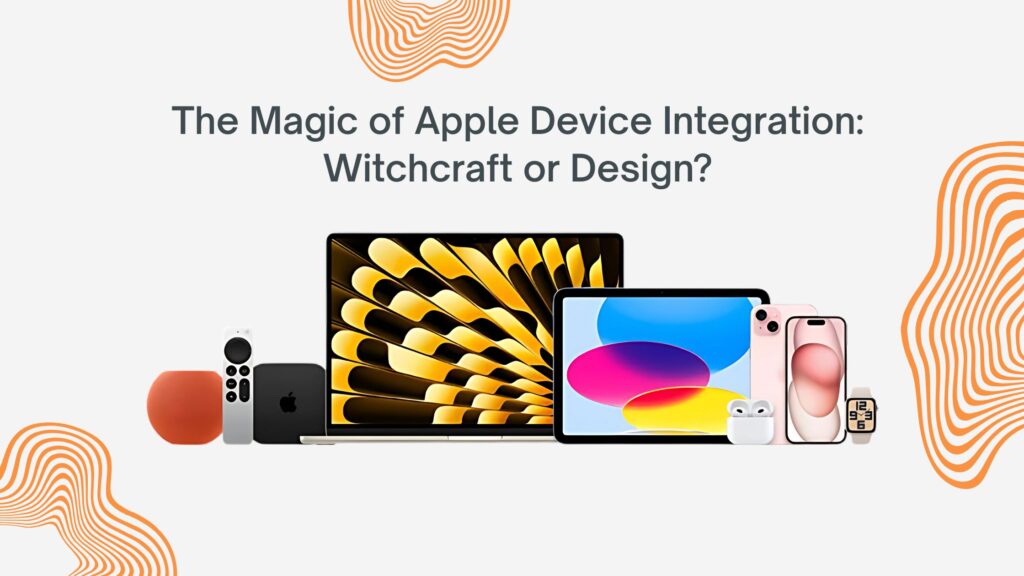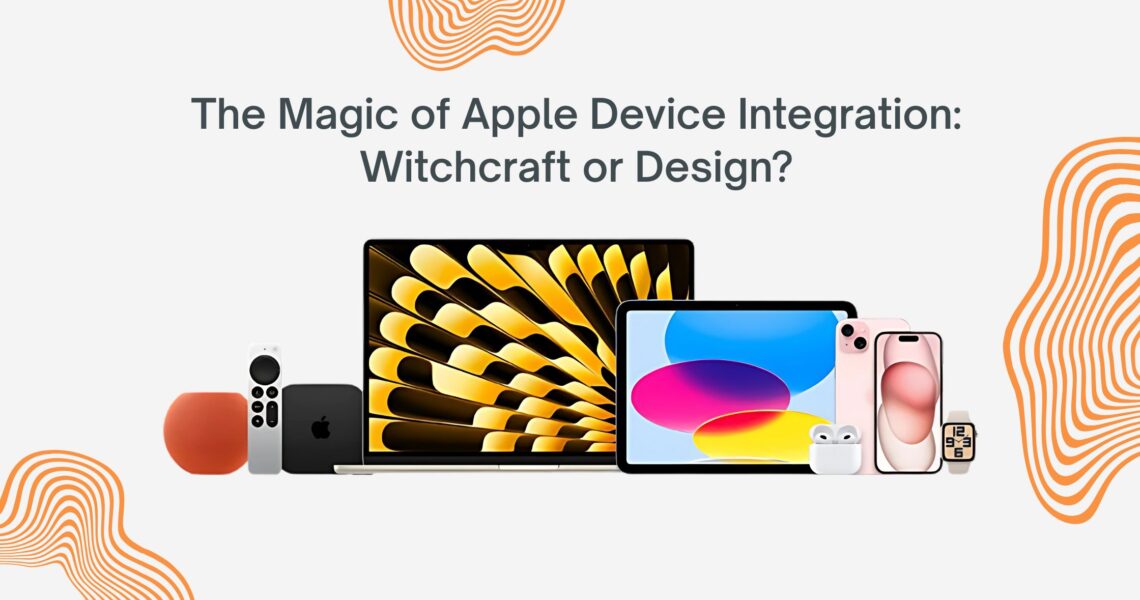The Magic of Apple Device Integration: Witchcraft or Design?

Let’s be honest. You’ve been there. Trying to get a photo from your Android phone to your Windows laptop, and suddenly you’re tangled in a mess of cables, third-party apps that don’t work, and Bluetooth menus that look like something out of a 90s sci-fi movie. It’s frustrating. But then you see someone with an iPhone take a picture and, like magic, it appears on their Mac. That fluidity, that kind of technological witchcraft, is the heart of Apple device integration. It’s a topic that sparks debates, hatred, and love, but its effectiveness is a whole different ball game. Many people think it’s luck or just “Apple being Apple,” but behind that polished experience is a design strategy that is as calculated as it is brilliant. In this article, we’re going to break down the reason for this cohesion, the real secret behind Apple device integration so you can understand, once and for all, that there’s no magic trick. Just a very, very well-executed plan.
The Walled Garden: The Key to Apple Device Integration This is the heart of the matter. The main reason why everything fits together so well. Apple controls every piece of the puzzle. And when I say every piece, I mean all of them.
Total Control: The Strategy That Changes Everything The folks in Cupertino leave nothing to chance. Unlike others, they design the hardware (the M2 chip, the aluminum chassis, everything) and also the software (macOS, iOS…). This vertical control allows for an optimization that is, quite simply, impossible elsewhere. They know exactly which processor will run a task, and they can create specific features that leverage that hardware to the millimeter. That’s why features like unlocking your Mac with your Apple Watch are so fast and secure. There are no middlemen, no surprises. It’s all homemade, like grandma’s apple pie. And, let’s admit it, it almost always turns out well.
Consistent UX or ‘Why You Don’t Go Crazy’ By controlling the whole show, Apple imposes very strict design rules. This makes a share button look and behave the same on an iPhone, an iPad, or a Mac. Sound silly? Not at all! It reduces the cognitive load, the time it takes you to learn how to use things. You don’t have to relearn the basics every time you switch devices. Phew! It’s a relief that many underestimate. I remember the old days with different operating systems, each with its own logic… it was like having to learn how to use a new Tamagotchi every day. Does anyone really miss that era?
Beyond the Mac: The Synergy That Gets You Hooked Apple device integration doesn’t just stop at the “big” devices. It extends to accessories in a way that is sometimes a little scary. But in a good way.
AirPods and HomePods: Sound That Flows Like Water AirPods are probably the best example of this magic. You take them out of the case and… boom! Your iPhone recognizes them. And not just your iPhone, but also your iPad, your Mac, and your Watch. They are linked to your Apple ID, not the device. You can be watching a video on your Mac, get a call on your iPhone, and the headphones switch on their own. Without touching a thing. It’s that feeling, like the smell of freshly brewed coffee in the morning, that makes you think, “okay, this is next level.” The audio Handoff with the HomePod is another one of those details that gets you hooked. You get home listening to a podcast, bring your phone near the speaker, and the music keeps playing there. Pure witchcraft. Interestingly, it’s this ease of use that later makes it so hard to leave the ecosystem. It’s not that other products are bad, far from it. It’s that you get used to everything just working without having to think about it.
AirTag: The Ultimate (and Brilliant) Snitch Network This is where Apple flexes its muscle in an almost insulting way. An AirTag has no GPS. So how does it find your lost keys in the middle of a park? Easy: it uses every iPhone, iPad, and Mac of anyone passing by as an anonymous and encrypted repeater. They’ve turned their hundreds of millions of customers into a global search network without anyone knowing. What a masterstroke! This is the ultimate expression of Apple device integration, where not only your devices work for you, but the whole world’s.
Conclusion: Trapped in the Apple Web At the end of the day, the incredible Apple device integration isn’t the result of chance or black magic. It’s the result of a strategy of tight control, an obsessive design for detail, and an ecosystem of hardware, software, and services that constantly feed off each other. From the simplicity of copying text on your phone and pasting it on your laptop to the complexity of a global network to find your keys, everything is designed to eliminate friction. So you don’t think about the technology, you just use it. And you, are you trapped in the Apple web? Do you think this convenience justifies the price and the “walled garden”? The answer, as always, is personal. But the effectiveness of Apple device integration is, to this day, undeniable.
Discover all Apple devices at the best price on shopdutyfree.uk

